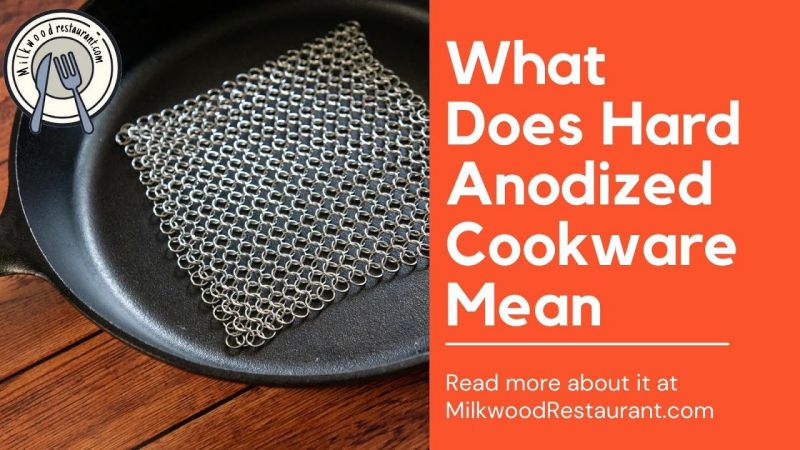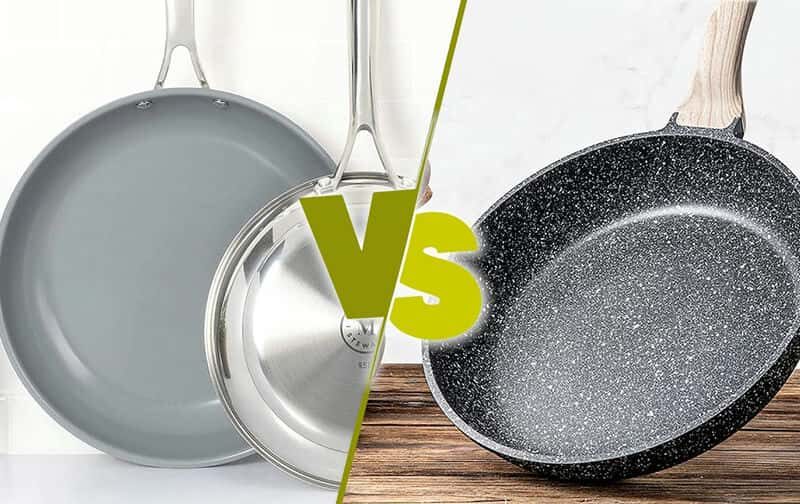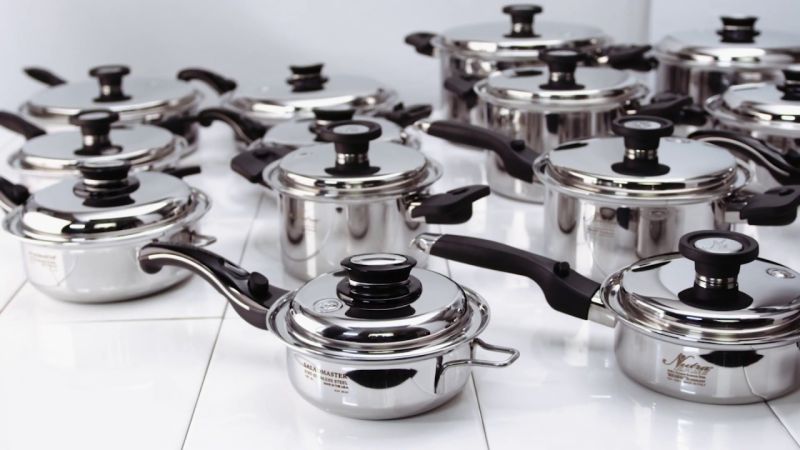Hard anodized cookware is the superhero of the kitchen. The secret to its strength lies in the electrochemical anodization process, which hardens the aluminum surface even more than stainless steel.
First, the aluminum is anodized by placing it in the air, creating a thin layer of aluminum oxide that protects it from further oxidation. The surface undergoes a process of thickening through a chemical bath.
It isjust followed by the application of an electric current to achieve exceptional strength and non-reactivity. This makes hard anodized cookware rust-resistant, scratch-resistant, and able to withstand heavy use.
Not only is hard anodized cookware tough, but it’s also lightweight and easy to handle. It can be used on any stove top and withstands high temperatures without melting or warping. It’s the perfect tool for busy cooks who need a reliable and durable cooking surface.
When shopping for hard anodized cookware, make sure to choose a high-quality brand that uses a thick layer of aluminum oxide.
Table of Contents
Is Hard Anodized Cookware Safe?
If you’re wondering whether hard anodized cookware is safe, the answer is generally “yes”. Studies have shown that it is a safer alternative to nonstick cookware, which contains chemicals that can be harmful to your health.
This means that it doesn’t react with the food you’re cooking, and it doesn’t leach any aluminum or chemicals into your food. This makes it a safe option for cooking any type of dish.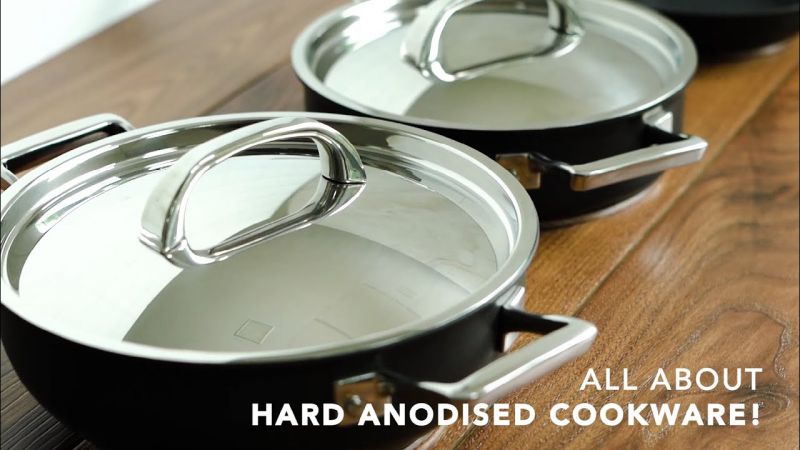
However, it’s important to note that the top layer of hard anodized cookware may develop scratches over time. These scratches can expose the aluminum underneath, which can be a concern, especially for people with renal insufficiency.
If you have renal insufficiency or any other health condition, it’s recommended that you discard the cookware once it develops scratches.
Related Posts:
- What Is Anodized Aluminum Cookware | Is It Safe | Disadvantages?
- What Cookware Do Professional Chefs Use
- How To Clean All Clad Cookware
What Are The Pros and Cons Of Hard Anodized Cookware?
If you’re considering purchasing hard anodized cookware, here are some of the pros and cons to keep in mind:
Pros:
Even heat distribution: Hard anodized cookware is one of the best heat conductors, which ensures that food is evenly cooked throughout.
Non-stick coating: Hard anodized cookware has a non-stick coating that prevents food from sticking to the surface.
Durable: Hard anodized cookware is two to three times stronger than stainless steel, which makes it one of the most durable cookware options available. It’s designed to resist chipping, scratching, and warping, so you can rely on its durability and longevity.
Lightweight: Cookware that’s been hard anodized boasts a feather-light construction, allowing for effortless handling and maneuverability. This is especially important for people who may have difficulty lifting heavier cookware, such as teenagers or those with arthritis.
Non-toxic: Many hard anodized cookware options do not use PFOA, which is a potentially harmful chemical found in some non-stick coatings.
Affordable: When compared to other cookware options, hard anodized cookware is often more affordable. This makes it a great option for people who want high-quality cookware without breaking the bank.
Cons:
Not safe for high-temperature oven use: Hard anodized cookware may not be safe to use in the oven at high temperatures, as this can cause the non-stick coating to break down.
Can scratch or chip: While hard anodized cookware is durable, it can still scratch or chip over time. This can affect the performance of the cookware and may make it less effective at distributing heat evenly.
Anodized vs Hard-Anodized Cookware – What is The Difference?
Anodized and hard-anodized are two types of aluminum cookware that have differences in their durability and resistance to wear and abrasions.
Thickness and Appearance: The Main Difference
The main difference between anodized and hard-anodized cookware is the thickness of the aluminum layer. Hard-anodized cookware has a thicker aluminum layer that makes it more durable and resistant to wear and abrasions. The thicker layer also makes the surface of hard-anodized cookware more uniform than regular anodized cookware.
Production Conditions: Temperature and Current Density
Hard-anodized cookware is produced at lower temperatures and higher current densities, which creates a thicker and more durable oxide layer than regular anodized cookware. The thickness of the aluminum layer must be greater than 25 microns to be considered hard-anodized.
Electrolytes: Sulfuric Acid vs Chromic Acid
Another difference between the two types of cookware is the electrolytes used in the anodizing process. In contrast, hard-anodized cookware typically uses a sulfuric acid solution with an organic acid additive such as; oxalic acid or amino sulfonic acid.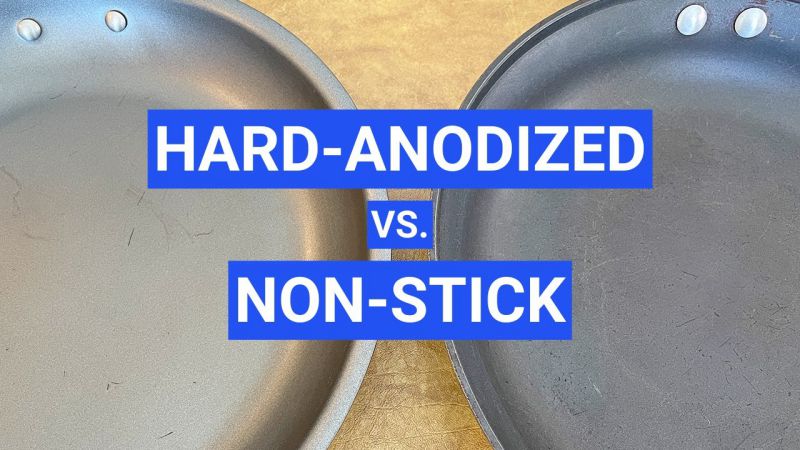
Sealing: To Seal or Not to Seal
Sealing is required in regular anodized cookware to close the pores produced during the conversion process to aluminum oxide. However, hard-anodized cookware does not require sealing because its thicker and more durable oxide layer is more wear-resistant.
Applications: Heavy-Duty vs. Consumer Products
Hard-anodized cookware is suitable for heavy-duty and high-wear environments such as hydraulics, pistons, and building exteriors. Regular anodized cookware is often used in building, airplane, and car industries. But, this product is used more in factories or businesses rather than by regular people like you and me.
How Hard Anodized Cookware Can Harm Your Health?
Over the past few years, hard-anodized cookware has become a go-to choice for many due to its durability and non-stick properties. However, some have raised concerns about the potential health hazards linked to cooking with anodized aluminum.
Although there is no conclusive scientific evidence to suggest that anodized aluminum cookware is dangerous, it is essential to consider the quality of the cookware you are using.
High-quality anodized aluminum cookware is generally safe to use for cooking, but lower-quality aluminum and scratched anodized aluminum pots and pans pose a greater risk to your health.
One of the primary concerns with using anodized aluminum cookware is the potential for aluminum to leach into your food. This can occur when acidic foods, such as tomato sauce, are cooked in aluminum cookware.
The acids in the food react with the metal, causing an increase in the aluminum content of the food, which can be harmful to your health.
While the amount of aluminum that may leach into your food from hard-anodized cookware is generally insignificant, it is still important to take necessary precautions to minimize your exposure to potential health risks.
For instance, you should avoid cooking acidic foods in aluminum cookware as much as possible and instead opt for alternative cookware materials like stainless steel or cast iron for those dishes.
It is also crucial to note that the surface of anodized aluminum cookware can become scratched over time, which can increase the potential for aluminum to leach into your food. This is why it is essential to invest in high-quality cookware that is free from scratches and other forms of damage.
Conclusion
Hard anodized cookware is born from an exclusive anodization process that strengthens aluminum for unparalleled durability. With its non-reactive surface, hard anodized cookware won’t interfere with the flavor or health benefits of your food.
Plus, its even heat distribution ensures faster and more efficient cooking. Whether you’re a professional chef or a home cook, hard anodized cookware is a reliable and valuable addition to your kitchen.

